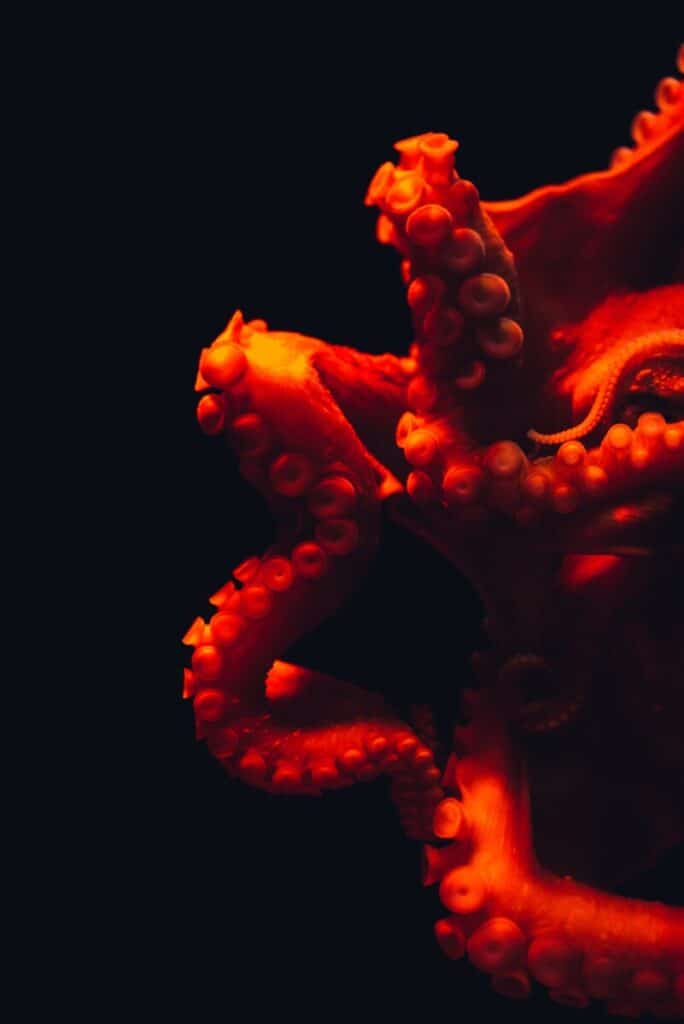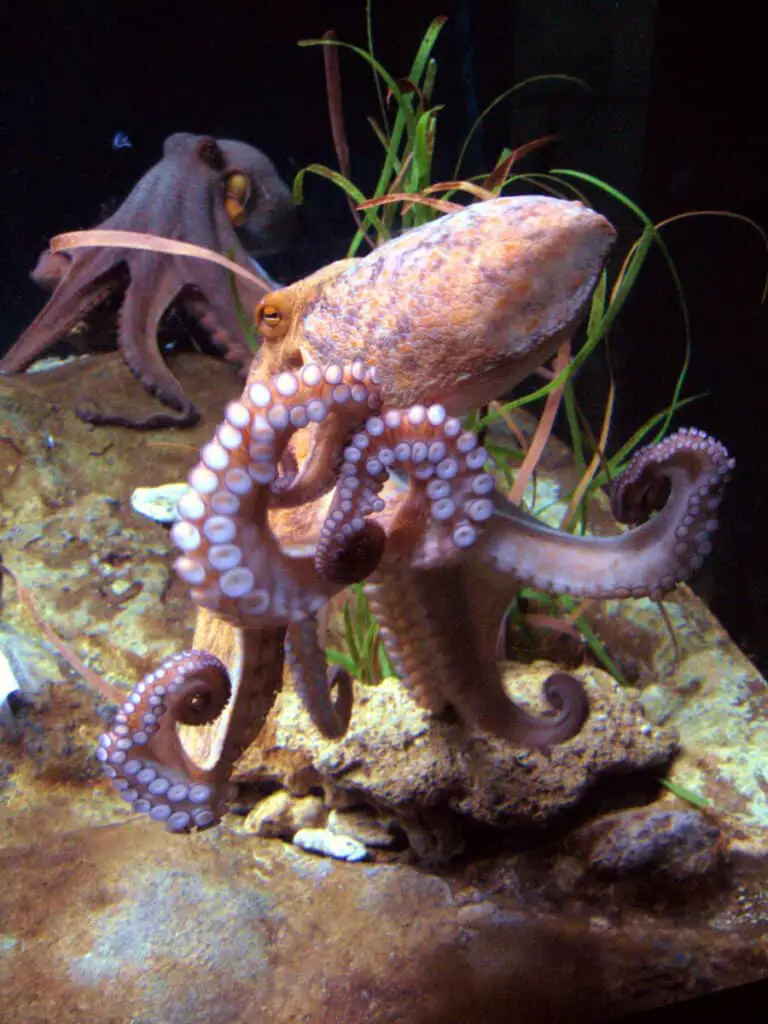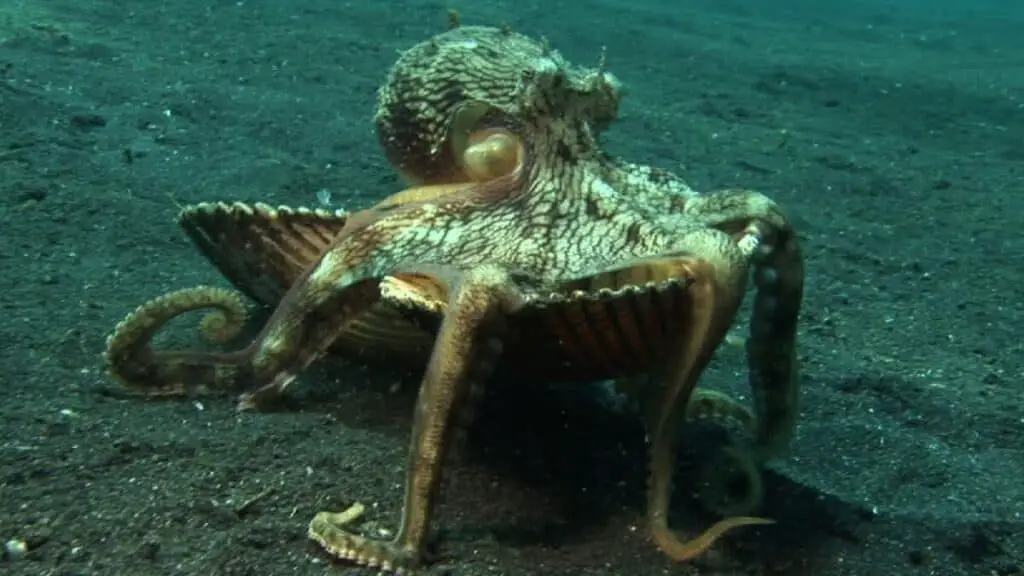These incredible marine animals have not one, not two, but three hearts! This begs the question: why does the octopus have three hearts? Moreover, what makes their blood so unique that it appears blue instead of red? Let’s dive into the amazing world of octopus anatomy and explore their incredible circulatory system.
Why do Octopuses Have 3 Hearts?
An octopus does indeed have three hearts, each with its own unique function. Two of these hearts, called branchial hearts, are specifically dedicated to pumping blood through the gills to facilitate respiration.
The central heart, known as the systemic heart, pumps oxygenated blood throughout the rest of the body, ensuring that all organs and tissues receive the vital nutrients and oxygen they need.
This fascinating adaptation has evolved to help the octopus maintain its high metabolic rate and energy demands, as well as thrive in its marine environment.
Having What it Takes to Live in an Alien Environment
The deep sea is a challenging environment for many animals, including octopuses. It is difficult for us to imagine what it would be like to survive in the pitch dark depths under surreal pressures.
Here are some of the conditions in the diverse habitats where octopuses thrive:
Temperature: The temperature in the deep sea can vary depending on the location, but it is generally cold. In some areas, the temperature can be as low as 0°C (32°F) or even lower. However, some octopuses have adapted to these cold temperatures and can thrive in the deep sea.
Darkness: Below 100 meters (328 feet) the deep sea is pitch dark, as sunlight does not penetrate beyond these depths. Many octopuses have adapted to this lack of light by developing specialized eyes that can detect bioluminescence, which is light produced by other animals in the deep sea.
Pressure: The pressure in the deep sea is immense, as the weight of the water above creates a crushing force. At the depths where many octopuses live, the pressure can be as high as 5,000 pounds per square inch (psi) or more. However, many octopuses have adapted to these high pressures by developing strong, flexible bodies and specialized structures that can withstand the pressure.
Oxygen levels: The oxygen levels in the ocean can vary depending on the depth and other factors. At the surface, the oxygen levels are usually high, similar to the oxygen levels in the air we breathe. But as you go deeper, the oxygen levels can drop pretty quickly, and at around 200-300 meters deep, the oxygen levels start to decline due to the reduced mixing of surface waters with deeper waters. At this depth, the oxygen levels can be around 80-90% of saturation, which is like the oxygen levels at high altitudes in the mountains.
As you go even deeper, the oxygen levels continue to drop, and at around 500-1000 meters deep, the oxygen levels can be as low as 40-60% of saturation. At 2000 meters deep, the oxygen levels can be as low as 20-30% of saturation, and at depths of 4000 meters or more, the oxygen levels can be very low, sometimes only a few percent of saturation.
It’s amazing to think how different the ocean can be at different depths, and how octopuses have adapted to these unique conditions over millions of years.

Why Do Octopuses Have Blue Blood?
Blue blood is an adaptation that allows octopuses to thrive in the cold and low-oxygen levels commonly found in deep-sea environments. Keep reading to discover the story of this fascinating adaptation.
As if three hearts aren’t strange enough, imagine having blue blood! Did you know that octopuses also have 9 brains! Talk about coming fully equipped! Check out my article Why do Octopuses have 9 Brains, 3 Hearts, and Blue Blood? Surprising Facts About Smart Suckers!
The blue color of octopus blood is due to the presence of a copper-based molecule called hemocyanin, which is responsible for oxygen transport within the animal.
This contrasts with the iron-based hemoglobin found in humans and many vertebrate animals, resulting in red-colored blood.
Hemocyanin, the copper-based molecule, is advantageous in the ocean environment, as it can bind oxygen very effectively and retains its oxygen-carrying capacity even in the cold, low-oxygen conditions found at great depths.
Additionally, copper-rich blood remains fluid at lower temperatures, which means that it can flow more easily through the body even in cold environments. In contrast, iron-rich red blood can become more viscous and difficult to pump at low temperatures, which can make it harder for the heart to circulate the blood throughout the body.
However, there are trade-offs to having a copper-based circulatory system, such as a reduced efficiency in oxygen transport when compared to iron-based hemoglobin.
To compensate for this, the octopus evolved an open circulatory system, which involves the direct bathing of organs and tissues in oxygen-rich blood.
This adaptation provides the octopus with an efficient way of ensuring that its vital organs receive the oxygen they need despite the limitations of hemocyanin, while also keeping energy costs low.
Closed Circulatory System
Octopuses, like humans, have closed circulatory systems, which means that blood is transported throughout their bodies via closed vessels and capillaries.
This is unlike most other invertebrates, which have open circulatory systems. In these animals the blood baths the organs directly, keeping them oxygenated while removing carbon dioxide and waste.
In the case of the octopus, the blood is contained within vessels and does not come into direct contact with their organs and tissues.
Wat makes the octopus circulatory system truly remarkable is the presence of three hearts, each with a specific function.
The branchial hearts, also known as the gill hearts, are responsible for pumping deoxygenated blood to the gills, where it is oxygenated before being sent back to the systemic heart. These hearts play a vital role in the process of respiration, ensuring that the octopus’s blood is properly oxygenated before being circulated through the body.
Without the branchial hearts, the octopus would not be able to efficiently extract oxygen from the water.

In contrast, the systemic heart is responsible for pumping oxygenated blood to the rest of the body. This heart is the primary pump of the circulatory system, delivering oxygen and nutrients to all parts of the body. It is also responsible for removing waste products from the body.
In summary, the branchial hearts and systemic heart have complementary roles in the octopus circulatory system, with the branchial hearts playing a vital role in respiration and the systemic heart being the primary pump of the circulatory system.
This complex system allows the octopus to efficiently transport oxygen to all of its organs and tissues, even those located in its eight arms. In fact, each arm has its own network of blood vessels, which allows it to function independently from the rest of the body.
But the octopus circulatory system is not just efficient, it is also highly adaptable. When threatened, octopuses are able to quickly redirect blood flow to their muscles, allowing them to escape danger with lightning speed. And because their blood is copper-based rather than iron-based (like human blood), it is better able to carry oxygen in low-oxygen environments, such as the deep sea.
Once again, the octopus circulatory system shows remarkable design that makes it perfectly suited to the unique needs of this active hunter. Whether adapting to changing conditions or escaping predators, the octopus’s three hearts and closed circulatory system allow it to thrive in even the most challenging environments.

In Summary
The octopus’ unique anatomy, including its three hearts, blue, copper-rich blood, and closed circulatory system, has evolved to adapt to the challenging conditions of the deep ocean.
These features ensure its survival by maintaining efficient oxygen distribution and metabolic processes with the advantage of being tailored to low-oxygen, high-pressure environments.
The fascinating world of octopuses reminds us of the incredible diversity and adaptability of life on Earth.


